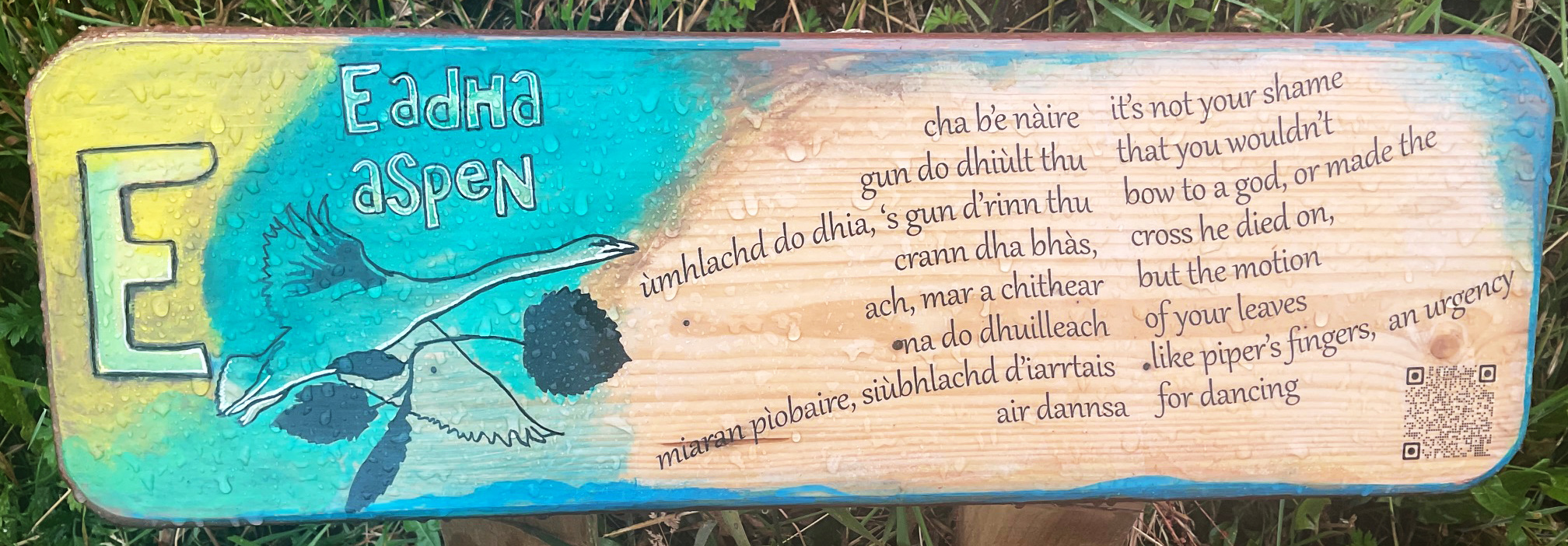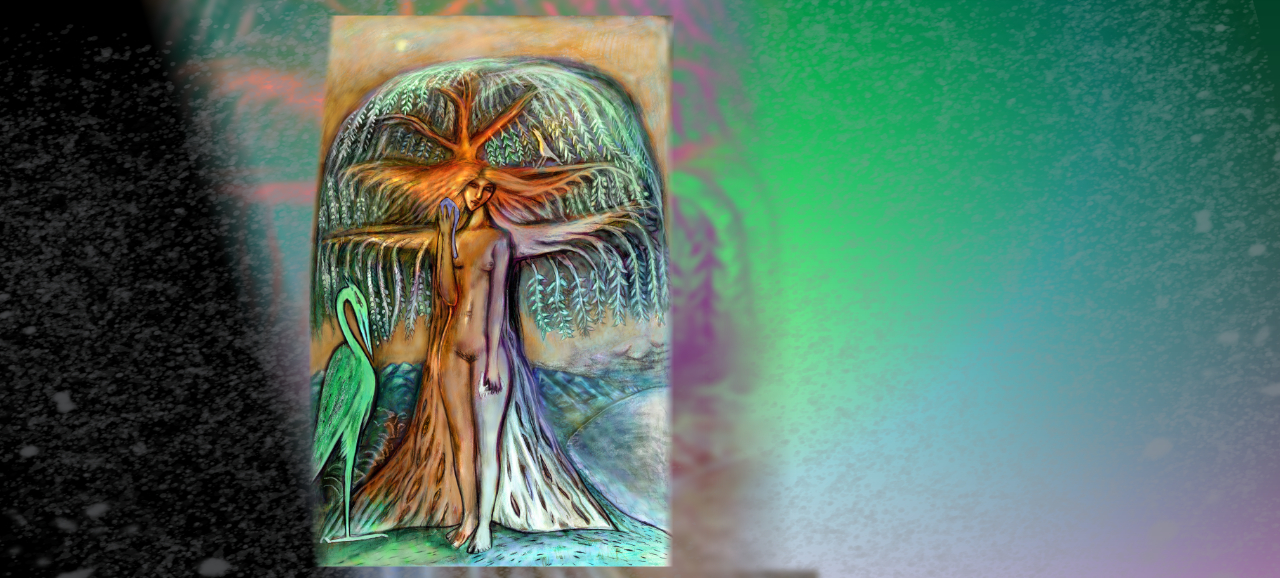
B L N F S H D T C M G P R A O U E I


cha b'e nàire
gun do dhiùlt thu
ùmhlachd do dhia,
's gun d'rinn thu
crann dha bhàs,
ach, mar a chithear
na do dhuilleach
miaran pìobaire,
siùbhlachd d'iarrtais
air dannsa
it's not your shame
that you wouldn't
bow to a god,
or made the
cross he died on,
but the motion
of your leaves
like piper's fingers,
an urgency
for dancing
The aspen is a light tree, often found at the edge of woods. However, owing to its ability to produce numerous suckers it is often found in a group and, in North America, one tree may form a forest covering many acres, all connected underground by root and fungi.
Its modest claims on the soil are similar to those of spruce, with which it often either shares or periodically alternates. A bark beetle epidemic, forest fire or storm recreates space for the aspen, which then loosens the soil. It can equally well cover raw ground, such as dumps or quarries, where it stabilises and enhances macrobiotic soil life, and attracts fungi.
The shape of the aspen is slender and graceful, and can seem similar to birch, its bark sometimes displaying eerie 'eyes'. Its size varies with soil quality, on sandy soils rather small, but on the edge of a good field can easily reach 80 feet. It rarely exceeds one hundred years of age and, although it may lose branches in storms,can quickly regenerate.
Its leaves have a particular characteristic. In size they are slightly larger than birch, rounder, with blunt toothed rims, yet the leaf stalks are extremely long and flexible, and flat on both sides. This enables the leaves to quiver in even the slightest breeze - hence the saying 'trembling like an aspen'. This phenomenon is very attractve since the undersides are silvery. All poplars use wind energy to enhance evaporation that increases water and nutrient absorbtion from the soil.

Aspen is one of the Bach Flower remedies:
The flower remedy
"increases inner strength and confidence, and helps to still fears and anxieties... encouraging one
into into a wider range of experiences and adventures without fear holding one back"
(Scheffer 1990)
The catkins are generally used for Bach flower remedies


Its name is derived from Greek word 'aspis', meaning shield and in ancient Greece the tree was sacred to Heracles. According to myth he wore an aspen wreath on a journey to the Underworld, when the outside heat scorched the leaves dark, while their underside was bleached white by the sweat and radiance of the hero's forehead. Hence aspen became a sign that return from the realm of the dead is possible.
The history of aspen as a element of trust on the journey etween the worlds goes back in time even further: Graves mentions golden crowns in the form of aspen leaves, which were found in Mesopotamian graves dating from 3000BC. Later the underworld link appeared in old Ireland where the measuring tool for coffin makers was made of aspen wood. In Celtic tradition battle shields were made from this tree. Its psychological shielding, increasing inner strength and confidence, may also have been why aspen was preferred to hardwoods for shields.

Another feature was that the living tree aided shifts of perception. The whispering of the aspen leaves was deemed to be oracular, the messenger of the gods. It is therefore not surprising that the Church fought so fiercely against the aspen, since in trying to establish Christ as being the only one to have returned from the dead, any other tradition making similar claims had to be evil! In the Middle Ages, when its tradition was already more than four thousand years old, aspen was seen as "connected with druids and a hateful tree to christians, hence curses are hurled at the aspen by the people" (Vickery 1995)
